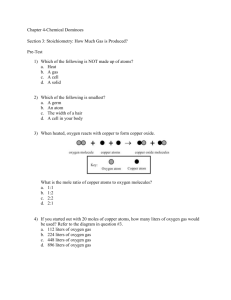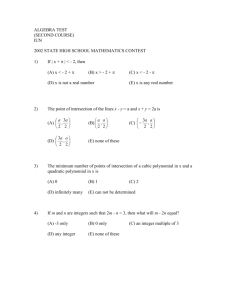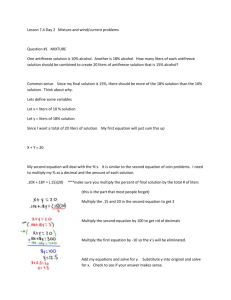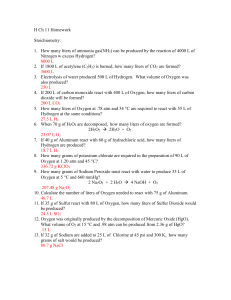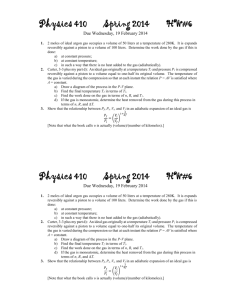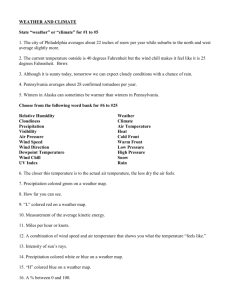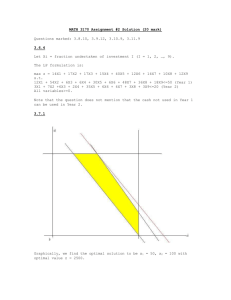An Introduction To Virtual Water
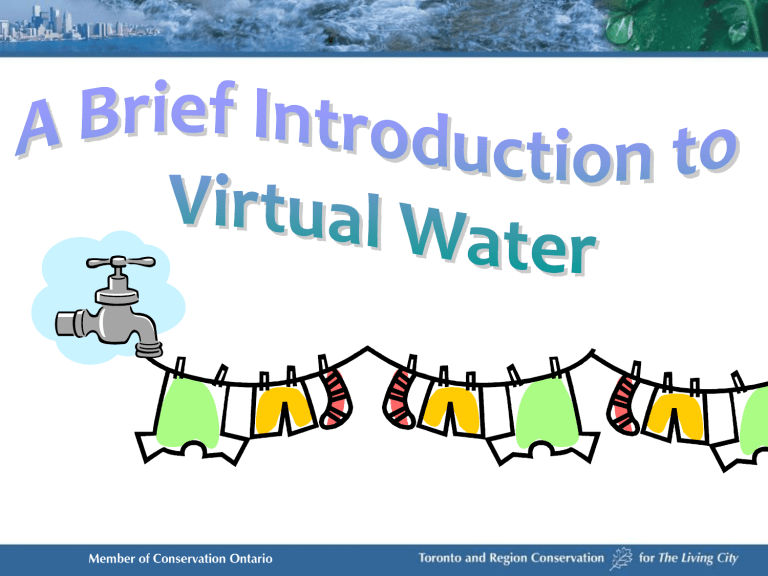
concept was developed by Professor John Anthony Allan quantifies the water used in the production of a good or service said to be ‘virtual’ because once the water is used, it is no longer contained in the product (example: wheat) a concept that is rather controversial and not universally accepted
3 colours of virtual water
BLUE – the volume of surface water or groundwater that has evaporated as a result of production.
GREEN
– the volume of rainwater that has evaporated as a result of production.
GRAY - the volume of water that is polluted as a result of production. in all cases, water is ‘lost’ because it is no longer available for other uses.
=
Approximately
50,000
liters
=
Approximately 140 liters
= 70 liters
= 2400 liters
= 32 liters
= 10 liters per sheet
= 3900 liters per kilogram
= 400,000 liters
= 5000 liters per kilogram
= 1300 liters per kilogram
can compliment carbon footprints & eco-footprints a country’s water footprint = virtual water import – virtual water export makes a link between water consumption in one place and the impacts felt by water systems elsewhere to accurately calculate water footprints, product transparency is needed from manufacturers and governments
Netherlands: virtual water import for coffee
…over 250 million cubic meters of virtual water are exported from South America EVERY YEAR!
why is this important?
UNESCO estimates that we have already reduced global use by 5% just by managing virtual water – it allows us to work as a global community to tackle water issues places with less water can gain access to foods
(and other products) with higher water requirements by importing them from areas with high rainfall and increased access to water – this allows water-scarce regions to use their water resources more efficiently it makes us think about water differently – a few liters of water are wasted when you take a long shower, but thousands of liters of water are wasted when you throw away food (and other products)
Blue water – irrigation, energy use, fossil fuel consumption (water is used in the extraction of fossil fuels)
Green water – evaporation
Gray water – pollution through fertilizers and pesticides
Blue water – processing of fibers, energy use, fossil fuel consumption
Gray water – pollution through dyes and other chemicals
Blue water – manufacturing processes, energy use
Gray water – pollution through fabric treatments, additional dye and other chemicals
Blue water – fossil fuel consumption, packaging, development of marketing materials
Gray Water - ……
1 cotton t-shirt = 2700 liters of virtual water

